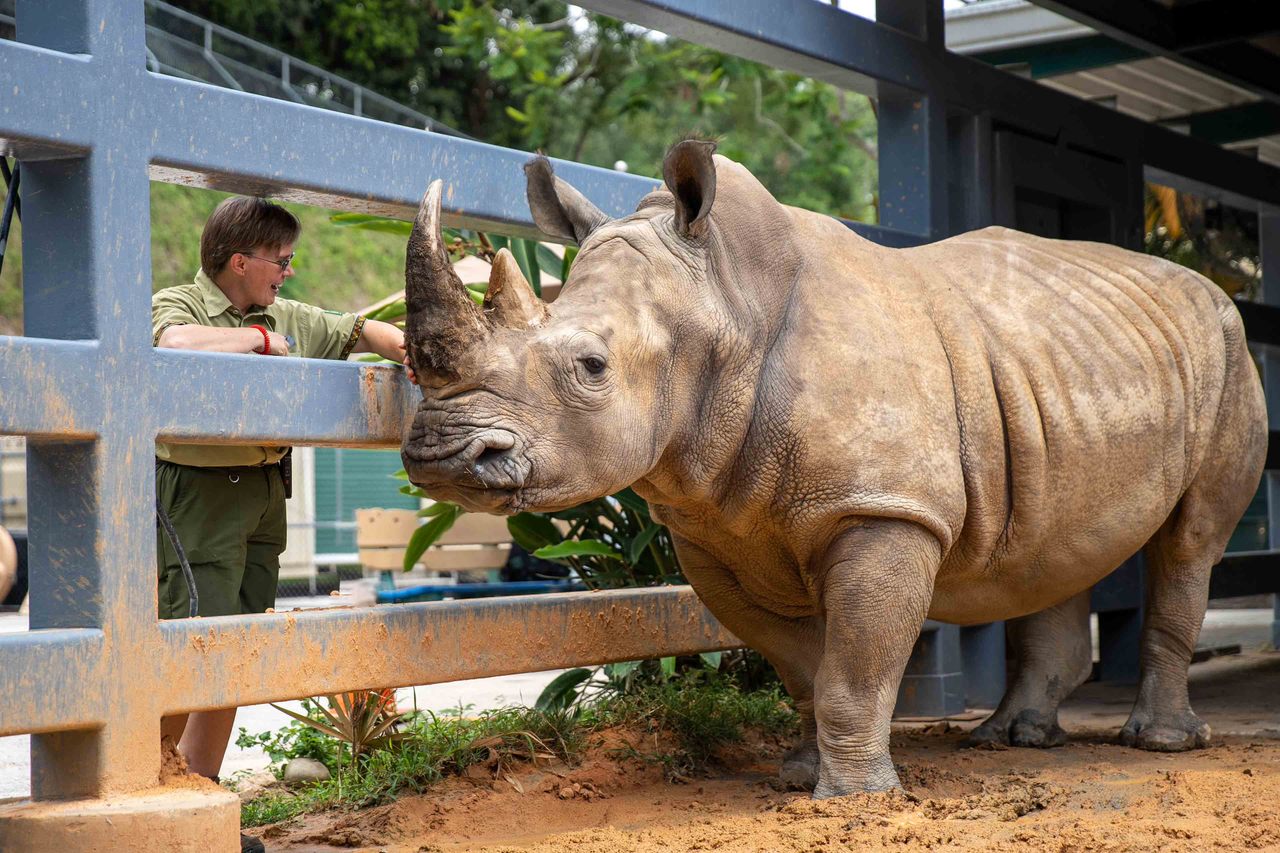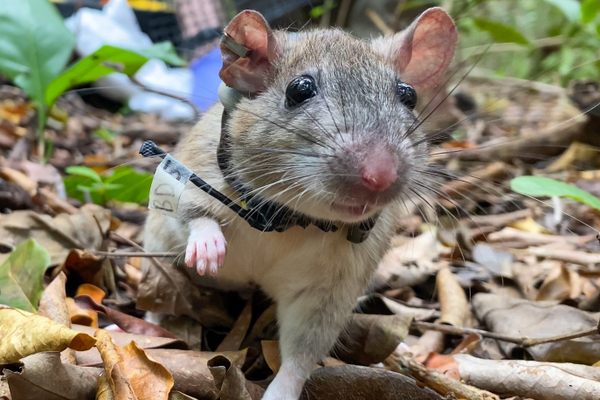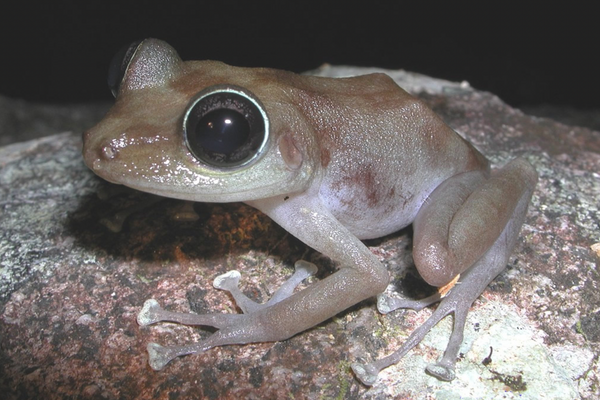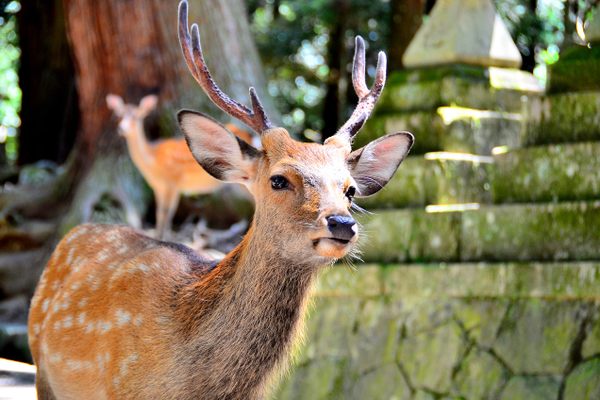Disney’s Animal Kingdom Rhinos Are the ‘Real Housewives’ of Orlando
Keeping the gossipy big animals healthy and happy means spa days and spritzes of cologne.
Rain Westgard’s coworkers are emotionally needy, and she’s fine with that. They are also clever, gregarious, and can weigh upward of 5,000 pounds. As a rhino keeper at Disney’s Animal Kingdom Theme Park near Orlando, Florida, it’s up to her to keep them physically fit, psychologically healthy, and otherwise entertained.
“There’s a lot of job security with white rhinos,” says Westgard, who has worked with them at Disney for 10 years. “They require a lot of care.”
It’s also a weighty job. There are only 27,000 rhinos left on Earth, and three of the five species are considered critically endangered. With nearly 10,000 poached in the last decade—including one at a zoo in France—the thousand or so animals in managed care worldwide are considered crucial to the long-term survival of all rhino species. As part of a large-scale study to better understand how to keep their charges happy and healthy, Westgard and her colleagues monitor the nutrition and BMI of nearly a dozen animals in their care, and even track them with the rhino version of a Fitbit across Walt Disney’s World Resort’s 110-acre savanna.
Atlas Obscura spoke with Westgard about barn gossip, how to brush 24 giant molars, and why “You can’t make a white rhino do anything it does not want to do.”
So, what’s a day in the life of a rhino keeper like?
My day starts at 5 a.m. when I come into the barn and greet all of my coworkers, the rhinos. Usually they’re like, “Oh, hey, you’re here,” and start to get up from their naps and get ready for breakfast. Breakfast is a bit of a production, as you can imagine. Rhinos do eat a lot. [Each day, each adult eats up to eight pounds of nutritionally balanced “rhino chow” pellets and up to 60 pounds of Bermuda grass.]
Then we get started on husbandry and cleaning, including oral exams. Rhinos have 24 teeth, all molars, so you really have to get them to open up their mouth to get in the back. If needed, we brush them with baking-soda-and-water toothpaste. We also have one rhino who, I’m not going to say that she has bad breath, but let’s just say to help her, she gets a mouthwash.
Then some rhinos head out to the Kilimanjaro Safaris ride, which is a mixed-species savanna habitat and exhibit. That’s their time to punch the clock, as we call it. Others stay in the barn or private outdoor areas. We call those spa days, because those rhinos get to have all of the attention, treats, and enrichment activities.

What kind of enrichment activities do they enjoy?
It varies, but a simple one is cologne. Rhinos are scent oriented, so we spray cologne on a surface for them to come over and investigate. Sometimes this will lead to drooling and then licking and rubbing their faces in it. They have a blast. Calvin Klein is really missing out on a marketing opportunity.
Other enrichments are more complex. We devise puzzle feeders and make it so they have to lift a log in order to find treats hidden underneath, like they would do in their natural environment. That helps them stay holistically healthy, with both physical and cognitive problem-solving components.
How do you go about putting a health tracker onto a rhino’s leg?
First, I should say that all of the rhinos are voluntary participants in procedures like trackers, ultrasounds, blood draws, injections, oral exams, and foot care. They have complete control; we don’t use sedatives or restraints. That requires intense trust, which can take months or years to develop.
Their eyesight isn’t really great, so they rely heavily on their senses of smell and hearing. When it comes time to introduce a rhino to a tracker, or something like antiseptic for needles, if they smell something and take a step back, that tells me they’re concerned about the object and we may need to slow it down a little bit. If they lean forward and continue to engage, they’re saying that while they don’t know what it is, they’re cool with it, and we move on to the next step. If that’s the tracker, we’ll give them a little alfalfa snack and then touch their foot with it to see what their reaction is. Once they’re cool with that, we put it on for a few minutes and see how they react. Some leave the barn wearing it without batting an eye.

Just how messy does your job get?
White rhinos, being large animals, do produce a lot of things to clean up. The good news is my job is a little easier because they are a social species. They use middens, meaning everybody goes to the bathroom in certain locations. It’s like their social media. One rhino will go in the midden and the next rhino will come investigate.
With their incredible sense of smell they can get information like how many rhinos have been there, if they’re old or young, male or female. Once they’ve gathered that information, they make their deposit for the next rhino. They put their social information in one location so everybody knows who’s around and what’s going on with them.
What’s their social dynamic like?
“Real Housewives of Atlanta” has nothing on the rhino barn because, my goodness, everybody’s got something to say. Sometimes they have feelings about another rhino and they have to tell their neighbor rhino about those feelings. I have to keep it straight in my head which sister is crabby with another sister, and then what auntie over there is talking about. They always sort it out and everybody’s best friends, but boy, they have a lot of feelings that they have to tell you about. [Rhino vocalizations include a whine similar to the sounds of a humpback whale call, a soft whisper, and a loud roar.]

What’s one of your most memorable recent moments with them?
I really appreciate when they have a light-bulb moment during training and give me an extension of trust. Recently, I was working on a behavior with Lola, asking her to hold herself in a certain position to allow for horn work. Their horns are a very personal and private part of their body. But sometimes if there’s a dent or a crack, we have to make sure we don’t have a problem. I was training Lola to hold very still and allow me to do things to her horn, like dig in there with a brush and apply a Dremel. She had to hold absolutely still for at least 30 seconds. When she got it, it was the best feeling ever. She was so proud. And she did get quite a bit of alfalfa for that one.
Do you feel hopeful about rhino conservation?
I do. Humans have an absolute unlimited potential for change. On our Up Close with Rhinos tours, I am able to connect with people about rhino conservation every day. They aren’t going to travel to Africa and build a preserve, but they might go home and look around and ask, “What can I do here in my house?” Like, maybe recycle, or support water and land conservation in their own neighborhood. It can really get the wheels turning.
You don’t have to change the minds of six-plus billion people. Sometimes it just takes one, and then it goes to another. It’s finding those little connecting points of light that will eventually go and light the world. We have done amazing things so far and it is only going to get better.
This interview has been edited for clarity and length.






























Follow us on Twitter to get the latest on the world's hidden wonders.
Like us on Facebook to get the latest on the world's hidden wonders.
Follow us on Twitter Like us on Facebook